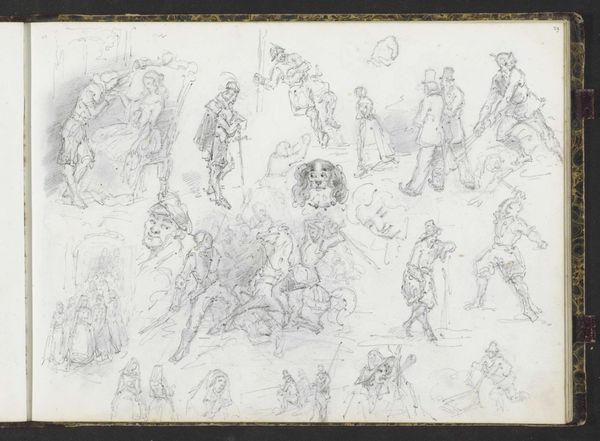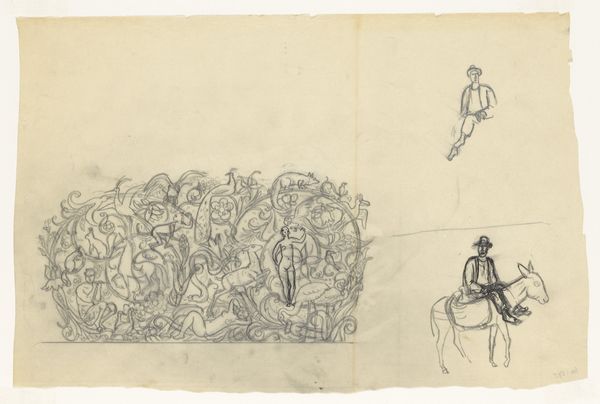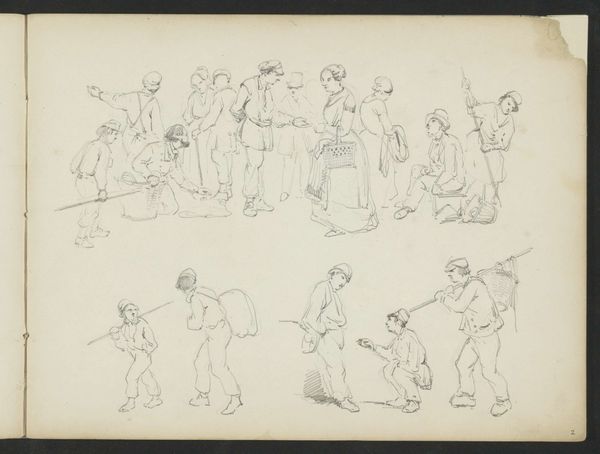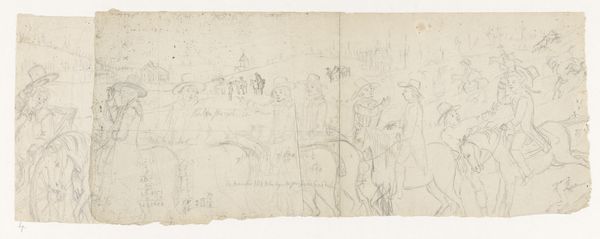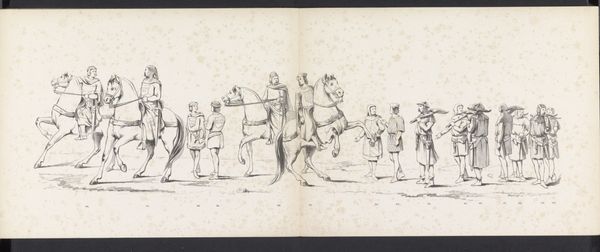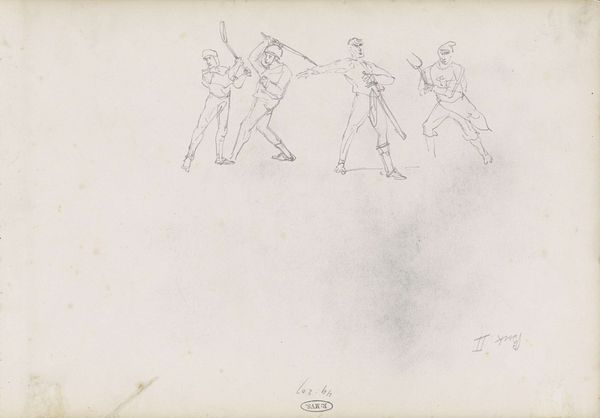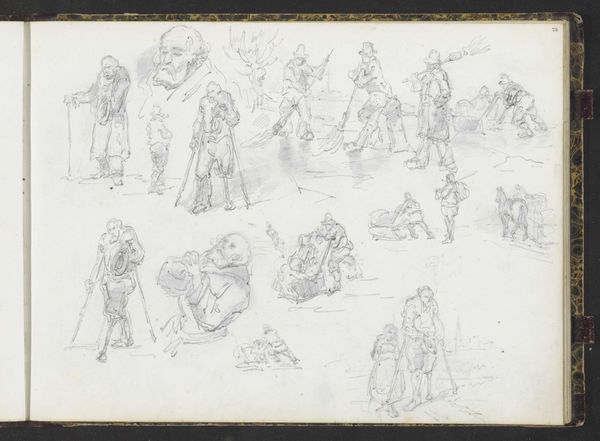
drawing, pencil
#
drawing
#
dog
#
figuration
#
child
#
pencil
#
cityscape
#
genre-painting
Dimensions: height 155 mm, width 400 mm
Copyright: Rijks Museum: Open Domain
Curator: Adrianus Eversen's pencil drawing, "Figuren op een markt," captures a lively market scene sometime between 1828 and 1897. What's your first impression? Editor: My eye is immediately drawn to the sheer number of figures—it seems chaotic yet somehow grounded. It's also incredibly light, barely there—almost as if the whole thing might just lift off the page! Curator: That lightness, I think, emphasizes the fleeting nature of the market itself – a temporary gathering. The drawing seems to explore archetypes – the merchant, the child, even the dog—each contributing to a tableau of daily life. The facelessness only accentuates that sense. Editor: Interesting point. I'm drawn to how quickly these figures could be produced. With minimal resources and a deft hand, Eversen’s creating a microcosm of 19th-century commerce and urban life. Think about the paper itself, its texture, likely locally sourced, influencing the character of the lines. It also strikes me that the paper is segmented; this gives a comic strip impression. Curator: The fragmented paper, indeed, hints at a longer narrative. But note how the figures aren’t individualized; they act as signifiers of social roles. Each form serves to populate and animate Eversen's marketplace. There is this feeling that they could mean any European marketplace throughout time, rather than one particular scene. Editor: Exactly, and consider the labour embedded in even this simple sketch. Pencils, paper, the very act of observing and drawing — all tied to the broader social and economic structure of the time. Think about how such markets offered both goods and social interaction! It almost becomes a performance. Curator: So the dog is like a street theatre extra in a travelling players' production! His posture really conveys motion and liveliness as well. But I think these faceless, archetypal figures aren’t simply realistic portrayals. Eversen's simplifying forms hints at how symbolic values were ingrained in everyday acts of commerce, like an ephemeral, materialist parable. Editor: That’s fascinating – it does make you consider the narratives attached to labour. He's using line itself to map human activity. Seeing the sketch and not a finished image really highlights that point. Curator: Absolutely. These lines really suggest the pulse and trade of past eras. Editor: And in that sense, the sketch itself becomes a sort of economic document.
Comments
No comments
Be the first to comment and join the conversation on the ultimate creative platform.

